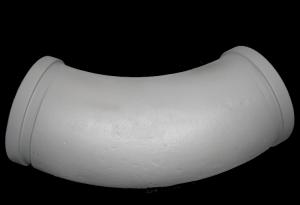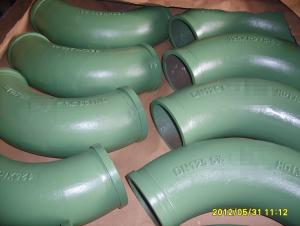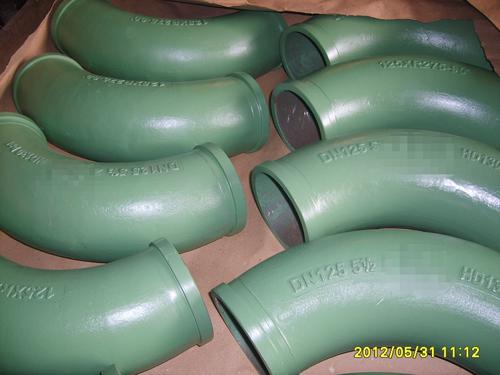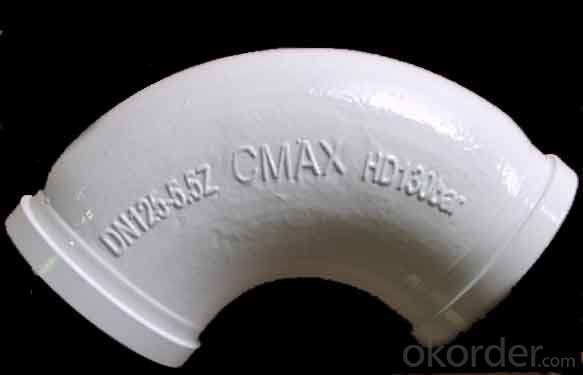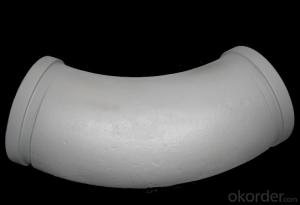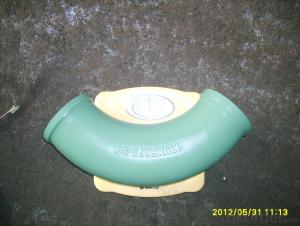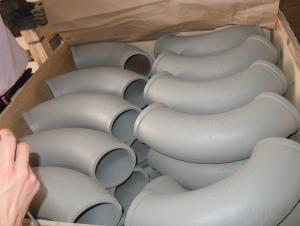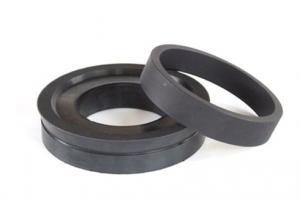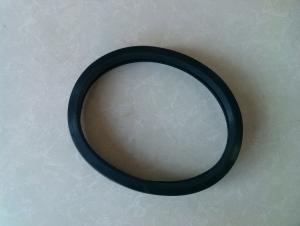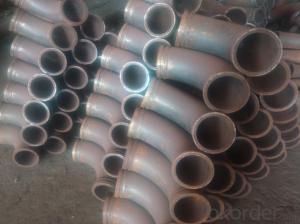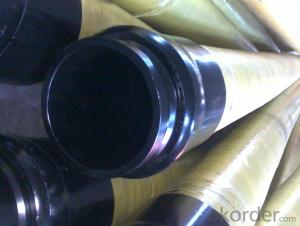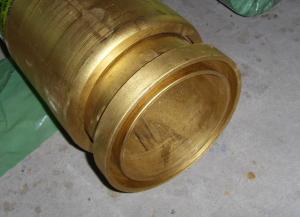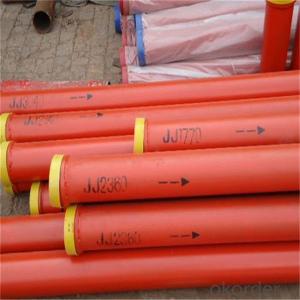Concrete Pump Truck Parts Elbow Bend R275 DN125 148Flange 15DGR Casting
- Loading Port:
- China main port
- Payment Terms:
- TT OR LC
- Min Order Qty:
- 180 pc
- Supply Capability:
- 10000 pc/month
OKorder Service Pledge
OKorder Financial Service
You Might Also Like
Product Description:
Widely used on concrete pump truck, concrete placing boom, trailer concrete pump etc, for concrete delivery pipe connection.
Our concrete pump bends have been successfully exported to many countries from 1998, Our main markets as below: Middle East, Southeast Asia, America, Brazil, Italy, Russia, South Africa etc
Main Product Features:
1. High Chromium and manganese content, which enables a higher wear resisting ability and longer lifetime.
2. Service life: 55000-150000 CBM Concrete.
3. Possess quality certification of ISO 9001:2000.
4. A wide range of specifications for you./ We have been providing parts for nearly ten years, and cooperting with the agent of the world famous brand, possess near every kind of elbow in the market.
5. We can supply OEM service and can also produce according to your requirements.
6. Total series of concrete pump ELBOW for different brand concrete pump(PUTZMEISTER, SCHWING, CIFA, SANY, ZOOMLION, IHI, KYOKUTO Etc) available from us.
Product Specifications:
Technology: Cast
Dimension: DN125
Radius: 275mm
Degree: 15D
Material: Mn13-4
Weight: 4.8kg
Characteristics: According to our technology, the cast elbow also has high working pressure and burst pressure.
Package: Every 180pcs put in one seaworthy wooden box, and 20 boxes in one 20feet container.
FAQ:
Q1: How to confirm that your elbows could be used in our pump?
A1: We have been providing parts for nearly ten years, and cooperting with the agent of the world famous brand, possess near every kind of elbow in the market. What is more, we can produce as the customers request with drawing provided.
Q2: How do we guarantee the quality of our products?
A2: We have established an advanced quality management system which conducts strict quality tests at every step, from raw materials to the final product.
Q3: How soon can we receive the product after purchase?
A3: Within three days of placing an order, we will begin production. The specific shipping date is dependent upon international and government factors, but is typically 10 to 20 workdays.
Q4: If we can produce some Concrete Pump Truck Parts according to customers request?
A4: Yes, we can produce Concrete Pump Truck Parts according to the difference country situations to make it suitable to the market and customers. We have very professional technical team to make the design.
Q5: How to make a quick resolution for after service?
A5: OKorder and our manufacture both have overseas branches all-around of world, IF needed, the seller shall dispatch 2 engineers to the buyer's site for supervision of training. The buyer shall make available of necessary facilities & skilled personnel at site for training.
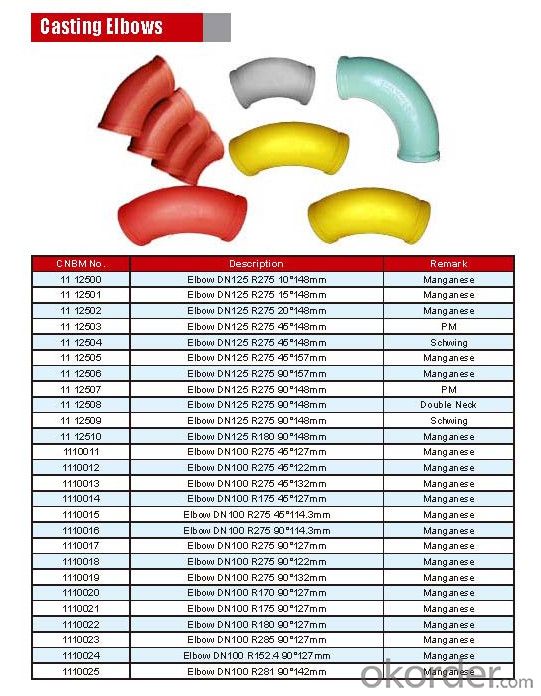
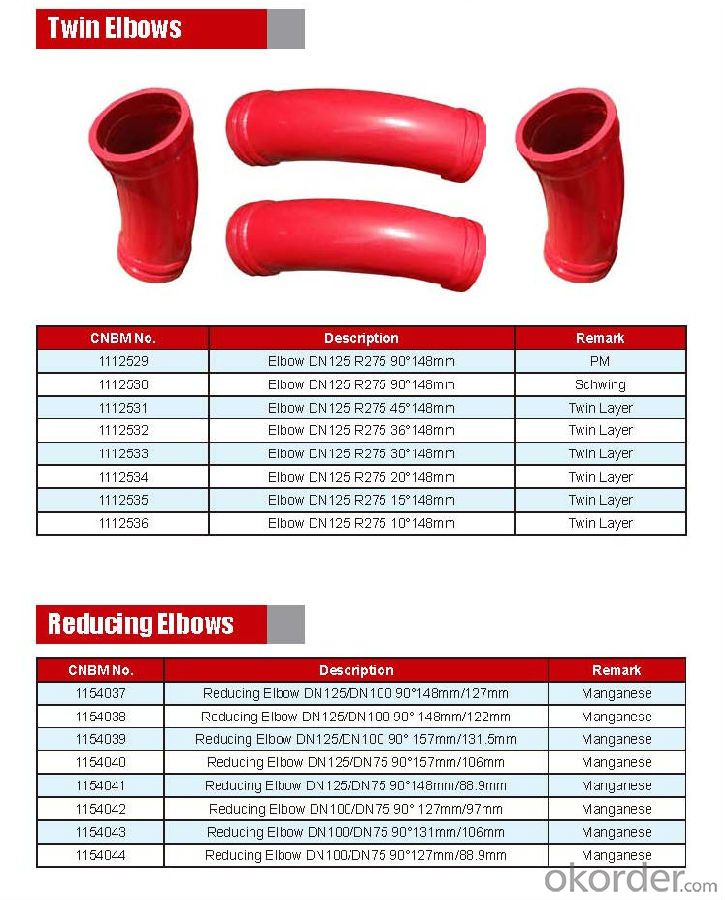
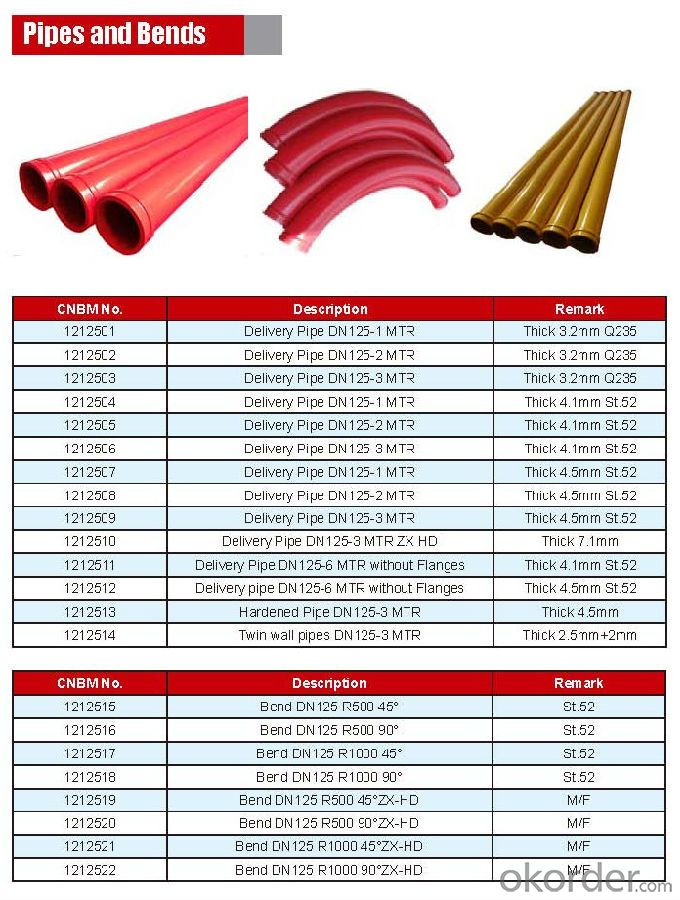
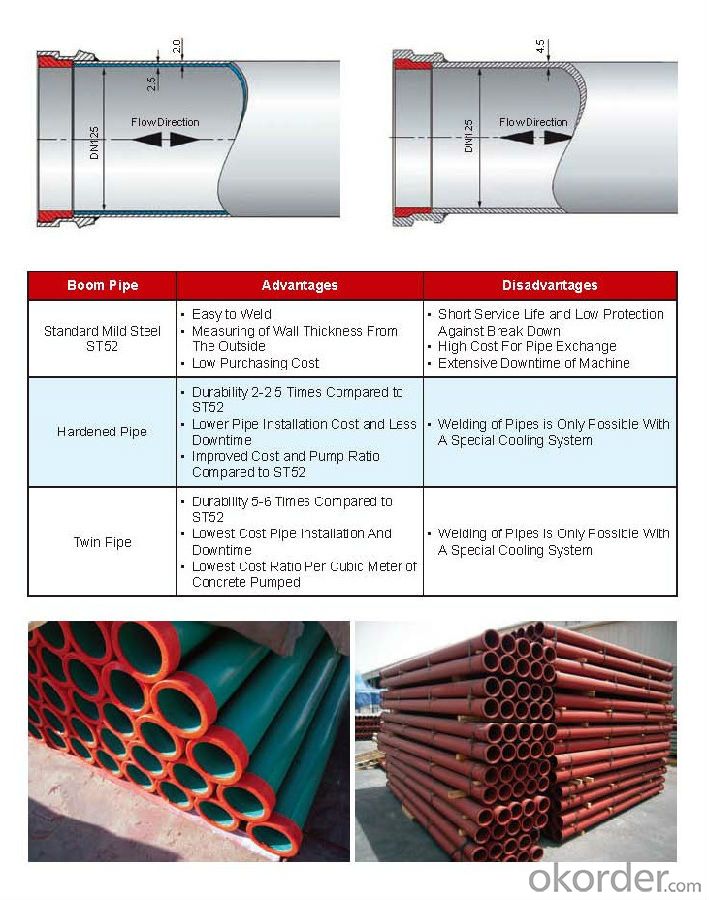
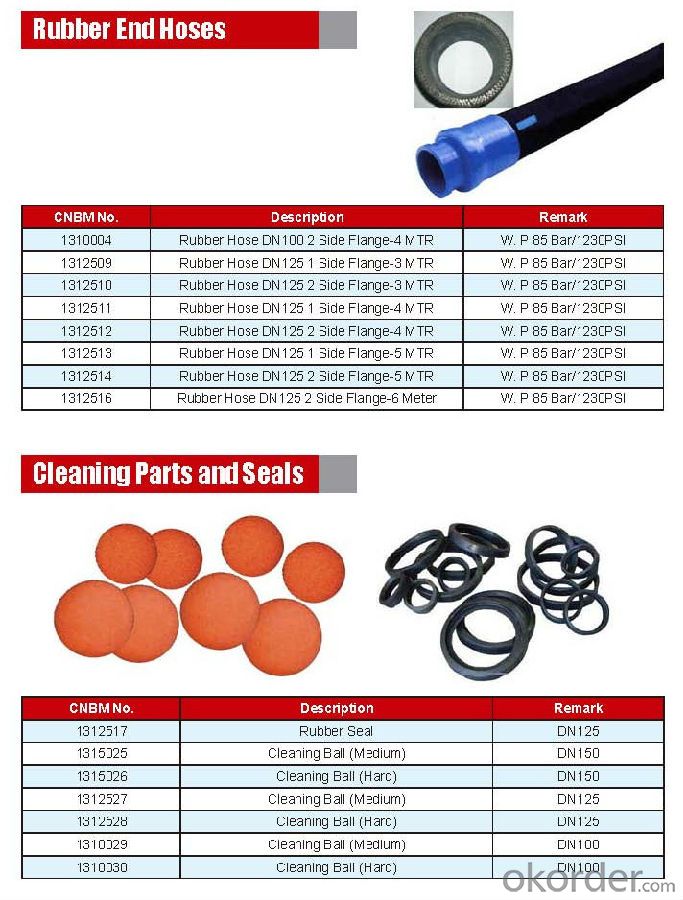
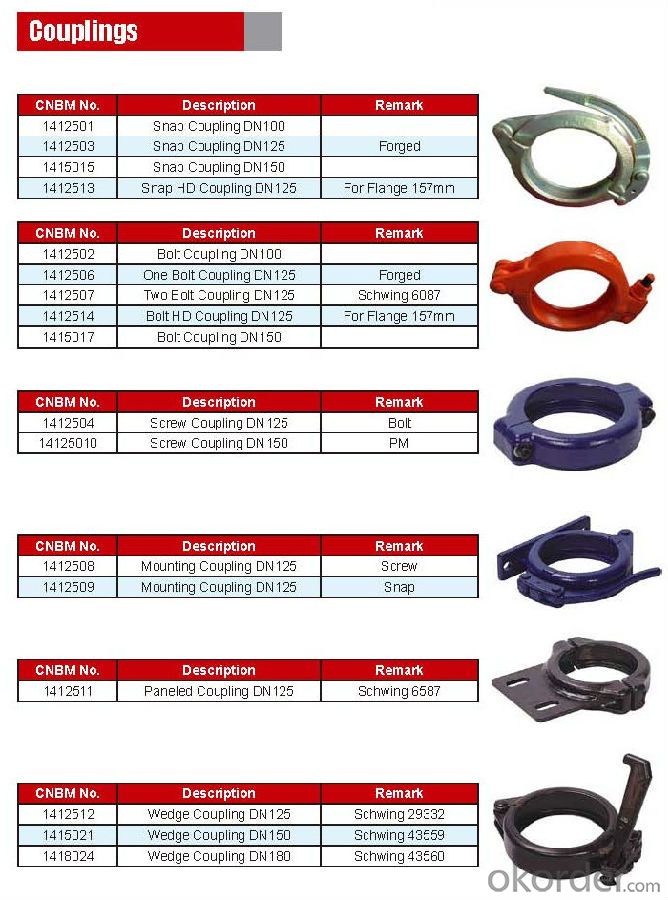
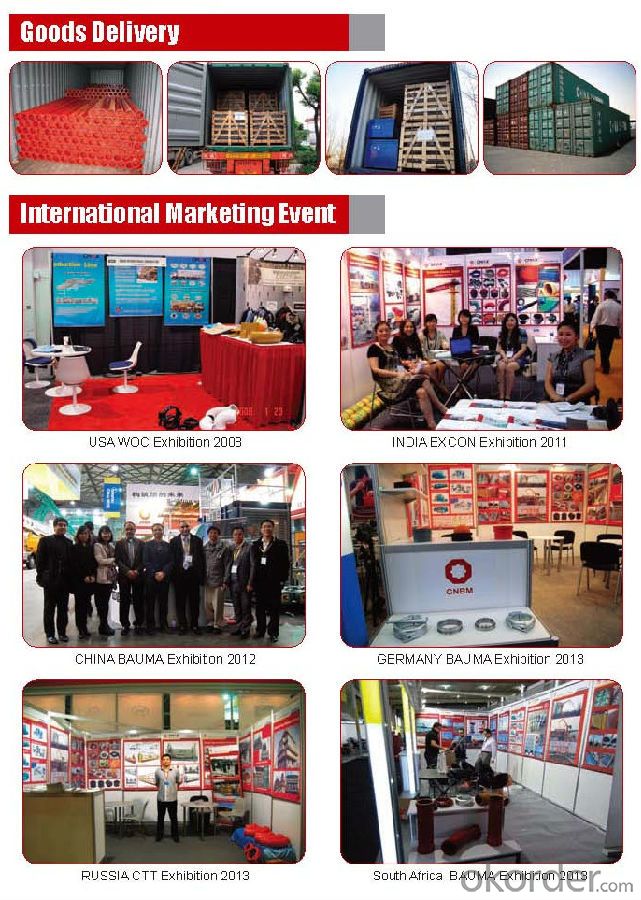
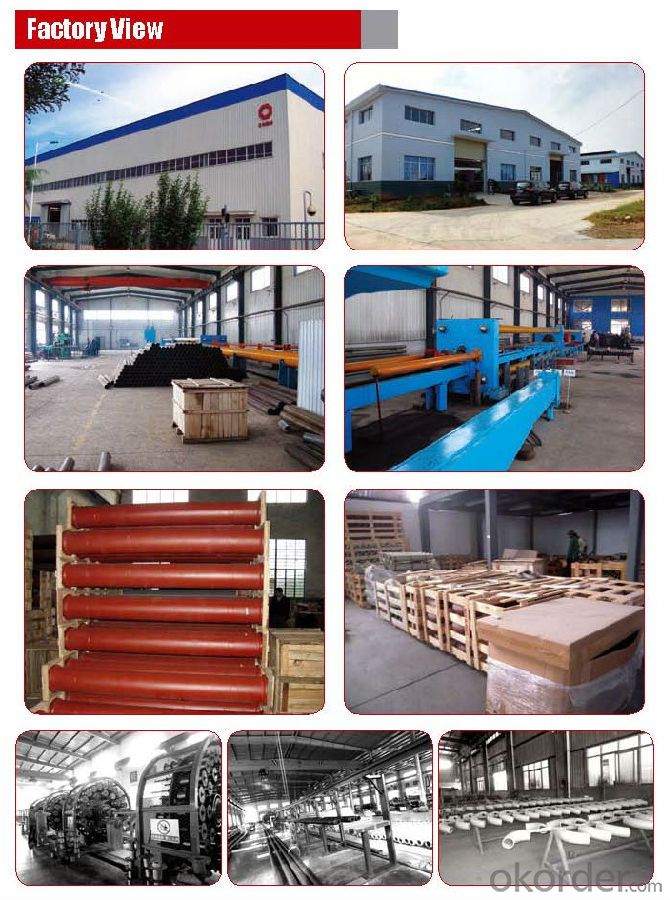
- Q: Are there any specific recommendations for the inspection and testing of concrete pump spare parts?
- Concrete pump spare parts come with specific recommendations for inspection and testing. To begin with, it is essential to visually examine the spare parts for any damage, such as cracks, dents, or excessive wear. Carefully inspect the parts for any irregularities or abnormalities. Next, it is advised to conduct non-destructive testing (NDT) to guarantee the integrity and quality of the spare parts. NDT methods like ultrasonic testing, magnetic particle testing, or dye penetrant testing can be utilized to identify any hidden flaws or defects in the parts. These tests are beneficial in detecting potential issues that might impact the performance or safety of the concrete pump. Additionally, it is recommended to verify the dimensions and tolerances of the spare parts to ensure they adhere to the manufacturer's specifications. Precision measuring tools can be employed to compare the measurements with the required specifications. Any deviations should be documented and addressed accordingly. Furthermore, functional testing should be carried out to ensure that the spare parts are functioning as intended. This involves installing the parts in the concrete pump and conducting various tests to verify their functionality and performance. For instance, the pump's flow rate, pressure, and efficiency can be tested to ensure optimal performance. Lastly, it is of utmost importance to adhere to the manufacturer's guidelines and recommendations for inspecting and testing concrete pump spare parts. These guidelines provide specific instructions and procedures for accurately and safely inspecting and testing each type of spare part. It is crucial to consult the manufacturer's documentation and seek professional advice if necessary.
- Q: What kind of concrete pump truck?
- At present, I know the pump mainly has the arm pump. This kind of arm work is flexible. Relatively fast speed. But the cost of maintenance and use is relatively high. Height limit. There are many requirements for the site
- Q: How can a faulty filter affect the pumping process?
- The pumping process can be significantly affected by a faulty filter in various ways. To begin with, the flow of fluid through the pump may be hindered if the filter becomes clogged or blocked. This can lead to reduced efficiency and increased energy consumption as the pump must exert more effort to overcome the resistance caused by the obstructed filter. Additionally, the decreased flow rate can result in longer pumping times, which can be problematic in time-sensitive applications. Moreover, a faulty filter may not effectively eliminate impurities or contaminants from the fluid being pumped. This can be particularly troublesome in industries where maintaining the purity or cleanliness of the fluid is crucial, such as in pharmaceutical or food processing applications. The presence of contaminants can jeopardize the quality of the final product or cause damage to equipment downstream from the pump. Furthermore, increased maintenance and repair costs can be a consequence of a faulty filter. If the filter is not functioning properly, it may allow larger particles or debris to pass through, which can cause damage to the pump components. This can result in heightened wear and tear, a shorter lifespan for the pump, and the need for more frequent repairs or replacements. Finally, a faulty filter can pose a risk to the overall system and its components. Complete failure of the filter can allow foreign objects or particles to enter the pump, potentially leading to blockages, damage to internal components, or even total pump failure. This can result in costly downtime, loss of production, and the need for emergency repairs or replacements. In conclusion, a faulty filter can have negative effects on the pumping process, including decreased efficiency, compromised fluid quality, increased maintenance costs, and potential damage to the pump and system components. Regular inspection, maintenance, and timely replacement of filters are crucial to ensure smooth and reliable operation of pumps in various industries.
- Q: How often should hydraulic filters be replaced in a concrete pump?
- Hydraulic filters in a concrete pump should be replaced on a regular basis to ensure optimal performance and longevity of the equipment. The exact frequency of replacement will depend on various factors such as the specific model of the concrete pump, the operating conditions, and the quality of hydraulic fluid used. As a general guideline, it is recommended to replace hydraulic filters in a concrete pump every 500 to 1,000 operating hours or at least once a year, whichever comes first. However, it is essential to refer to the manufacturer's recommendations and guidelines for the specific model of the concrete pump, as they may have specific maintenance schedules and intervals. Regular inspection of the hydraulic filters is also crucial to determine if replacement is necessary sooner than the recommended interval. If the filters are clogged, damaged, or show signs of excessive wear, they should be replaced immediately to prevent any potential damage to the hydraulic system. Additionally, if the concrete pump is operating in harsh or dusty environments, the filters may need to be replaced more frequently to ensure proper filtration and prevent contamination. Overall, proper and timely replacement of hydraulic filters in a concrete pump is essential to maintain the efficiency and reliability of the equipment, prevent potential breakdowns, and extend its service life.
- Q: How do I properly maintain and replace rubber pistons in concrete pump spare parts?
- Proper maintenance and replacement of rubber pistons in concrete pump spare parts involves a few key steps. Firstly, make sure to regularly inspect the pistons for any signs of wear, such as cracks or tears. It is recommended to replace them if they are significantly worn or damaged. To replace the rubber pistons, start by removing the old piston carefully, ensuring not to damage the cylinder or any other components. Clean the cylinder thoroughly, removing any debris or residue. Apply a lubricant or concrete pump primer to the cylinder walls to aid in the installation of the new piston. Next, carefully install the new rubber piston, ensuring it is properly aligned with the cylinder. Gently push it into place, avoiding any unnecessary force that could cause damage. It is important to refer to the manufacturer's instructions or guidelines for specific installation techniques. After replacing the rubber piston, run a few tests to ensure its proper functioning. Check for proper sealing and smooth operation by conducting a dry run or pumping a small amount of concrete. Monitor the piston's performance closely, and if any issues arise, consult a professional or the manufacturer for further guidance. Regular maintenance, such as cleaning the cylinder and lubricating the pistons, can help extend their lifespan. Additionally, following proper operating procedures, such as avoiding excessive pressure or abrasive materials, can also contribute to the longevity of rubber pistons.
- Q: What is the purpose of a concrete pump accumulator?
- The concrete pump accumulator serves the purpose of storing energy and ensuring a continuous and uniform flow of concrete while pumping. It acts as a intermediary between the pump and the delivery line, guaranteeing a smooth and uninterrupted delivery of concrete. The accumulator functions by compressing air or nitrogen, which is then utilized to propel the concrete through the pipeline when the pump is not actively operating. This aids in maintaining pressure and preventing any obstructions or irregularities in the flow of concrete. Additionally, the accumulator can reduce the wear and tear on the pump by absorbing pressure fluctuations and providing a more controlled and consistent flow of concrete. In summary, the concrete pump accumulator aims to enhance the efficiency, reliability, and performance of the pumping process.
- Q: How often should concrete pump water pumps be inspected and replaced?
- Concrete pump water pumps should be inspected regularly, ideally on a monthly basis, to ensure they are functioning properly and to catch any potential issues early on. However, the frequency of replacement will depend on various factors such as the pump's usage, maintenance, and overall condition. It is recommended to consult the manufacturer's guidelines and seek professional advice for determining the specific replacement schedule for concrete pump water pumps.
- Q: How does a concrete pump hopper grate prevent clogs?
- A concrete pump hopper grate plays a crucial role in preventing clogs by acting as a filter and allowing only the required size of aggregate or material to pass through. It is designed with small openings or grids that are strategically placed to catch any excess debris, rocks, or large particles that can potentially cause clogs in the pump system. As the concrete mixture is poured into the hopper, the grate acts as a barrier, ensuring that only the properly sized material passes through while obstructing any larger or unwanted debris. This helps maintain the smooth flow of concrete through the pump system, preventing any blockages or jams that can disrupt the construction process. Moreover, the grate is often made of durable materials such as steel or high-density polyethylene, which are resistant to wear and tear. This ensures that it can withstand the high-pressure environment and continuous operation without being damaged or deformed. Regular maintenance and cleaning of the hopper grate are also essential to prevent clogs. By regularly inspecting and removing any accumulated debris or build-up, operators can ensure that the grate remains clear and fully functional, preventing potential clogging issues. In summary, a concrete pump hopper grate prevents clogs by acting as a filter, allowing only the required size of aggregate to pass through while catching any larger particles or debris. Its design and material durability ensure a smooth flow of concrete through the pump system, minimizing the risk of blockages and maintaining the efficiency of construction operations.
- Q: How can a faulty concrete pump control valve affect the pumping operation?
- The pumping operation can be adversely affected by a defective control valve for the concrete pump. To begin with, it can result in a lack of control over the rate at which the concrete flows. The control valve is responsible for regulating the quantity of concrete being pumped, and if it is faulty, it may not be able to adjust the flow rate accurately. This can lead to an inefficient operation due to an excessive or insufficient amount of concrete being pumped. Moreover, an unreliable control valve can cause inconsistent flow of the concrete. The valve is designed to maintain a steady and consistent flow, but if it is not functioning properly, it can cause fluctuations in the flow. As a consequence, the concrete may be distributed unevenly, thus affecting the quality and integrity of the pumped concrete. Additionally, a faulty control valve can contribute to accelerated wear and tear on the pump and other components. When the valve does not operate correctly, it can subject the pump to excessive pressure or strain, resulting in increased wear on the equipment. Consequently, breakdowns may occur more frequently or repairs may be needed, which can be both time-consuming and expensive. On the whole, a defective control valve for the concrete pump can have a significant impact on the pumping operation by causing a loss of control over the flow rate, inconsistent flow of the concrete, and increased wear and tear on the equipment. It is crucial to regularly inspect and maintain the control valve to ensure its proper functioning and prevent these negative consequences.
- Q: Can concrete pump spare parts be coated with corrosion inhibitors for long-term storage?
- Yes, concrete pump spare parts can be coated with corrosion inhibitors for long-term storage. Corrosion inhibitors are chemicals that can be applied to metal surfaces to prevent or minimize the corrosion process. By applying a corrosion inhibitor coating on concrete pump spare parts, it can create a protective layer that prevents moisture and oxygen from coming into contact with the metal, thus reducing the risk of corrosion. This is particularly important for long-term storage, as the spare parts may be exposed to harsh environmental conditions or stored in damp areas. The corrosion inhibitor coating can help to extend the lifespan of the spare parts and ensure they remain in good condition until they are needed for use.
Send your message to us
Concrete Pump Truck Parts Elbow Bend R275 DN125 148Flange 15DGR Casting
- Loading Port:
- China main port
- Payment Terms:
- TT OR LC
- Min Order Qty:
- 180 pc
- Supply Capability:
- 10000 pc/month
OKorder Service Pledge
OKorder Financial Service
Similar products
Hot products
Hot Searches
Related keywords
